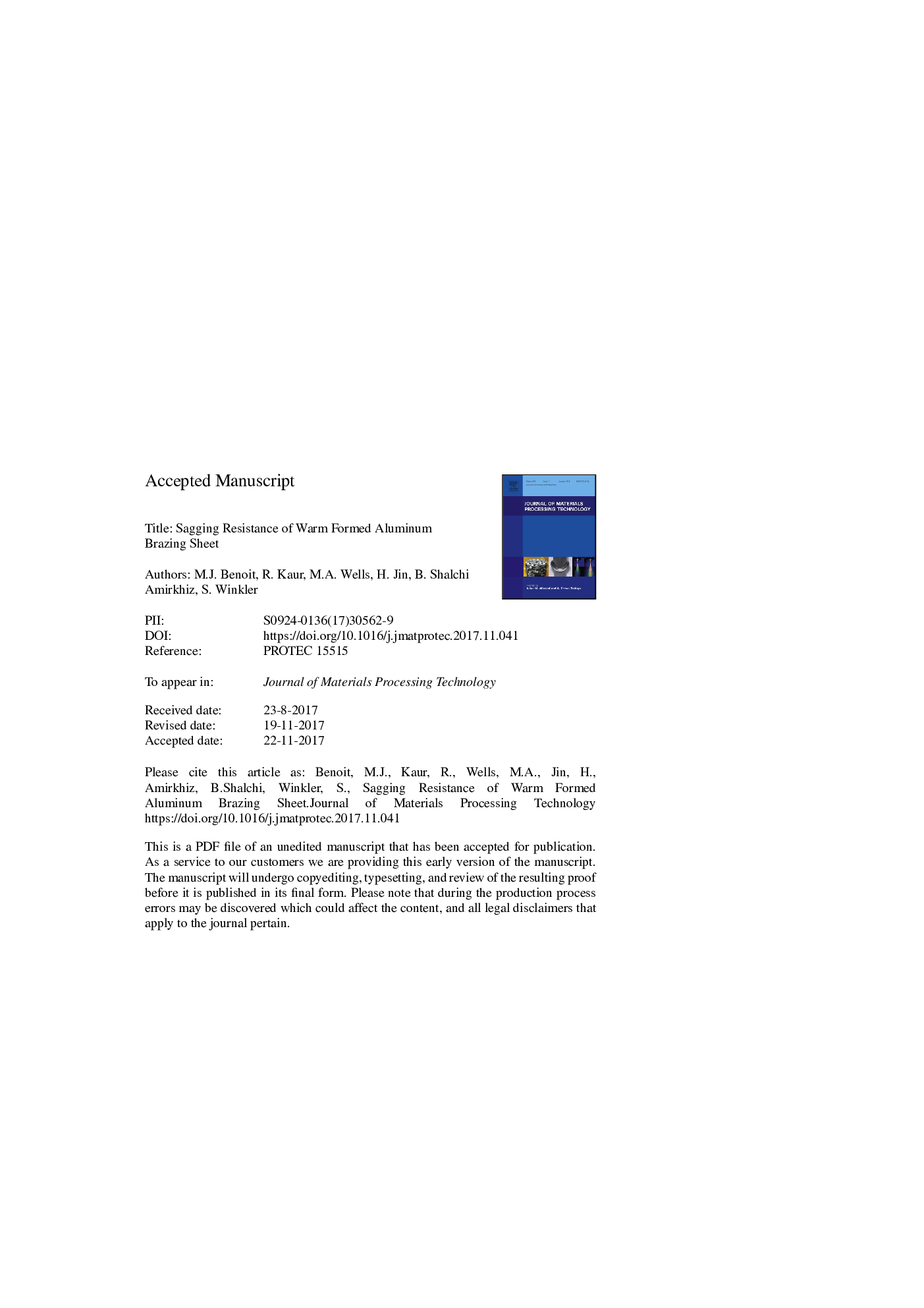| Article ID | Journal | Published Year | Pages | File Type |
|---|---|---|---|---|
| 7176544 | Journal of Materials Processing Technology | 2018 | 22 Pages |
Abstract
Interrupted tensile tests, performed between room temperature (RT) and 250 °C, were used to simulate warm forming of an AA3003/AA4045 brazing sheet. Brazing performance was predicted from sagging distance measurements after a thermal cycle. The sagging distance as a function of strain for sheets strained at 150 °C was similar to that of RT strained samples, while the sagging distances were larger at all levels of applied strain for sheets strained at 200 °C and 250 °C. Large sagging distances were correlated with the occurrence of liquid film migration during simulated brazing and a recovered substructure in the core alloy, while small sagging distances were associated with a coarse, recrystallized core alloy. The poor brazing performance of sheets formed above 150 °C was attributed to a reduction in the stored strain energy during forming, resulting in recovery rather than recrystallization during brazing, leaving a microstructure which is susceptible to liquid film migration.
Keywords
Related Topics
Physical Sciences and Engineering
Engineering
Industrial and Manufacturing Engineering
Authors
M.J. Benoit, R. Kaur, M.A. Wells, H. Jin, B. Shalchi Amirkhiz, S. Winkler,
